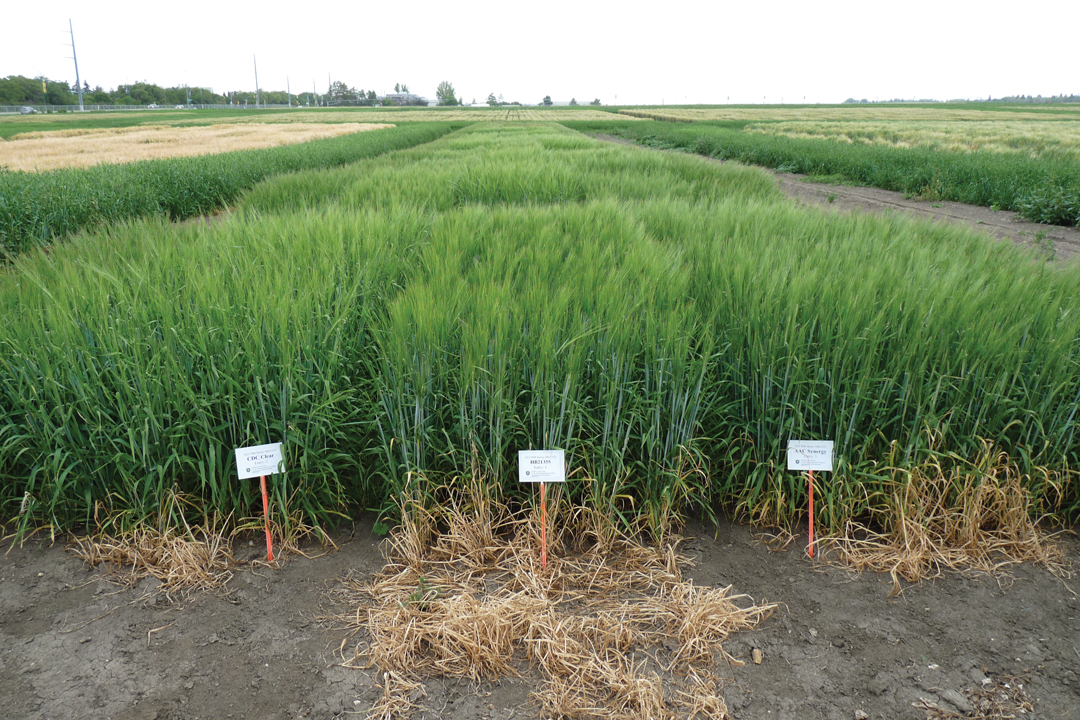FOOD BARLEY POTENTIAL LIGHTLY TAPPED
BY ADELINE PANAMAROFF • PHOTO COURTESY OF GISELLE CAMM
The Canadian Grain Commission’s (CGC) variety designation lists released this past summer include four newly trialled hulless barley varieties. These include two food varieties for human consumption, CDC Valdres and CDC Henrick, as well as two hulless malting varieties, CDC Pristine and CDC Armstrong. All were developed by the University of Saskatchewan Crop Development Centre (CDC), where breeding work on such varieties has been ongoing since the 1980s. Agriculture and Agri-Food Canada (AAFC) has conducted similar breeding work for about two decades.
“The new designation might result in additional scrutiny from the quality point of view for the barley breeding lines seeking support for registration as hulless barley for food,” said Ana Badea, AAFC research scientist, barley breeding and genetics.
The market for Canadian food barley is quite small. Canadian hulless barley is now exported to Asia, pearlized and mixed with rice to increase its fibre content. Beta-glucan, a soluble fibre, can also be extracted from barley, then added to various food products to increase the fibre content. Only about a dozen farmers grow food barley on the Prairies, said Aaron Beattie, head of the CDC Barley and Oat Breeding program. But interest has risen with the development of CDC Valdres, CDC Henrick and Badea’s two-row, purple food barley. AAC Magenta is the first coloured Canadian barley to be registered domestically. This is due to the high nutrition value and fibre of these varieties. Badea’s purple barley is packed with anthocyanins, an antioxidant linked to numerous health benefits. All barley is high in beta-glucan.
Health Canada has long recognized it can reduce the risk of cardiovascular disease, diabetes and other illnesses. Hulled barley averages three to four per cent beta-glucan by weight, while the new CDC hulless varieties have levels of nine to 11 per cent.
The nutritional value and potential health benefits of CDC Valdres and CDC Henrick may increase the market potential for food barley in general, as Badea noted. However, an impediment to the use of barley in commercial food production is its low gluten content. Barley flour must be mixed with other grains to produce leavened bread. Product testing has been carried out in recent years by the University of Manitoba and CGC to create high-fibre pastas, crackers and flatbreads. Food processors must pick up on these innovations to create demand that will spur farmers to grow the new varieties, explained Beattie and Badea.
Beattie does note that brewers and distillers have been increasingly interested in these barleys. “These new hulless malting varieties probably have a very different and a very clean flavour, which a lot of the brewers these days are really looking for,” he said. Brewers can extract between five and seven per cent more fermentable sugars from hulless malt versus hulled varieties.
An uptake in food barley varieties by farmers would have to be backed by government incentives and increased market demand. “The varieties themselves, I think are good,” said Beattie. “The farmers would be able to grow these varieties without a lot of difficulties, but I think the varieties right now have outpaced the market.”






Comments